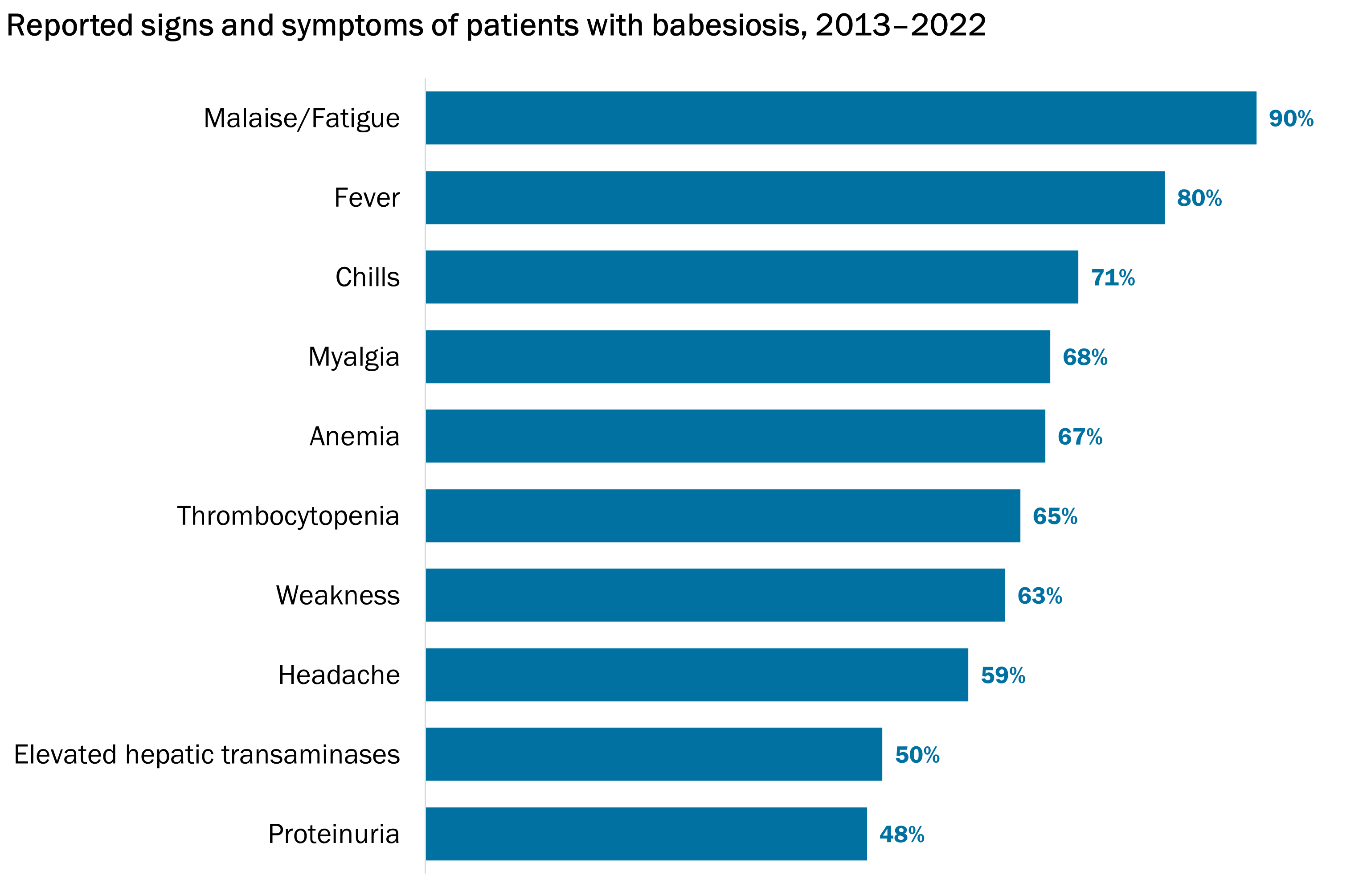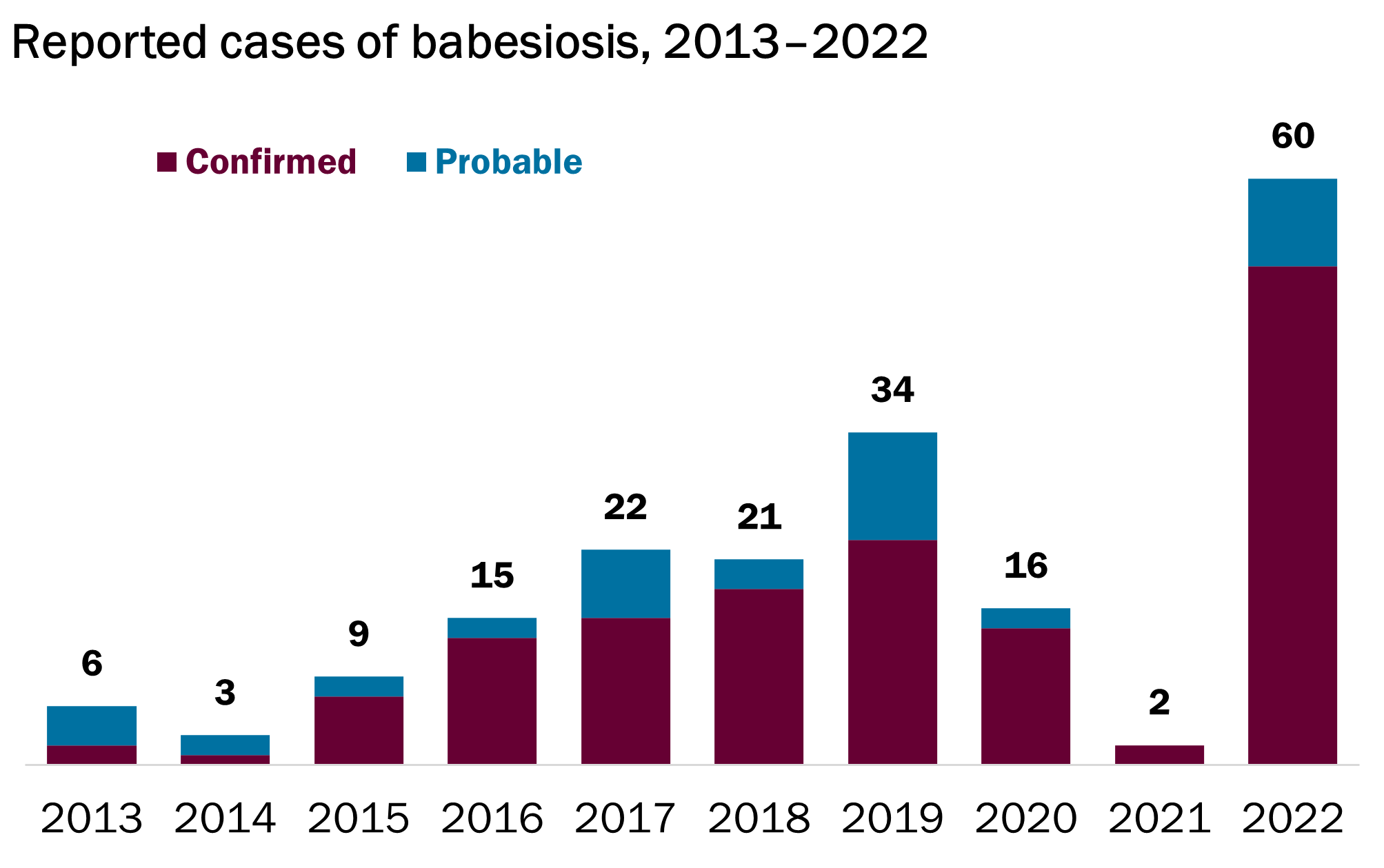Babesiosis in Vermont is caused by an infection with a microscopic blood parasite called Babesia microti. These parasites can be transmitted to humans by the bite of infected blacklegged ticks (Ixodes scapularis), the same tick that transmits Lyme disease and anaplasmosis. Babesiosis can also be transmitted by blood transfusion and rarely by congenital transmission, from an infected mother to her baby (during pregnancy or delivery).
Explore Babesiosis Trends
Babesiosis is reportable in Vermont. We collect and analyze data on babesiosis cases to keep Vermonters informed of their risk so they can take necessary precautions. See below for more information about common symptoms, cases over time, who gets babesiosis, and when and where the risk is highest in Vermont.





